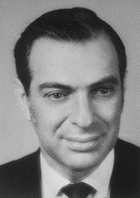


Kenneth Arrow
|
Since the outcome of an election can change dramatically with the election procedure used, we might wonder if there is a "best" outcome -- one that most fairly represents the will of the people. In 1951 mathematician and economist Kenneth Arrow proved that the only voting procedure that satisfies a certain definition of "fairness" is a dictatorship -- where there is only one voter! Arrow's Impossibility Theorem, as it is known, helped him win the 1972 Nobel Prize in Economics. Here's Arrow's theorem... Assuming that...
then the only voting procedure left is dictatorship -- where there is only one voter! Arrow's theorem may lead to a sense of hopelessness -- after all, it appears that there is no fair way of counting votes other than only having one voter! But the important thing to realize is that Arrow's theorem includes a definition of fairness. If you throw out or modify one of his fairness conditions, then that opens up the door for fair voting procedures. In particular, many voting theorists don't go along with the Independence of Irrelevant Alternatives Condition. They think that perhaps a third candidate's presence in the mix should affect how the first two candidates are ranked in some small way. The Borda Count is one voting procedure that has a lot of support as a "fair" procedure. Another procedure is approval voting in which each voter gives "approval" to as many or as few candidates as the voter wishes. The candidate with the highest overall approval rating wins the election. Some say that approval voting gives the voter more ability to express his or her opinion. The voter can go with their strategic choice (Gore, maybe) and still register support for their sincere choice (Nader, maybe). Others say that approval voting opens up the election to too much chaos. After all, voter A and voter B may rank the candidates in the same order first to last, but voter A might approve of only his first choice, where voter B might approve of her first and second choices. With more options in expressing preferences, far more election outcomes can occur. Most experts agree that the plurality vote is deficient. There's a good bit of disagreement over whether the Borda Count or approval voting is the way to go. Mathematics can shed a lot of light on voting procedures, but it has its limitations. We may be able to give a definition of fairness mathematically, but whether or not we all agree on that definition is another question entirely. |
Site Maintained by Derek Bruff
derek.bruff@vanderbilt.edu
Last Updated
February 20, 2002